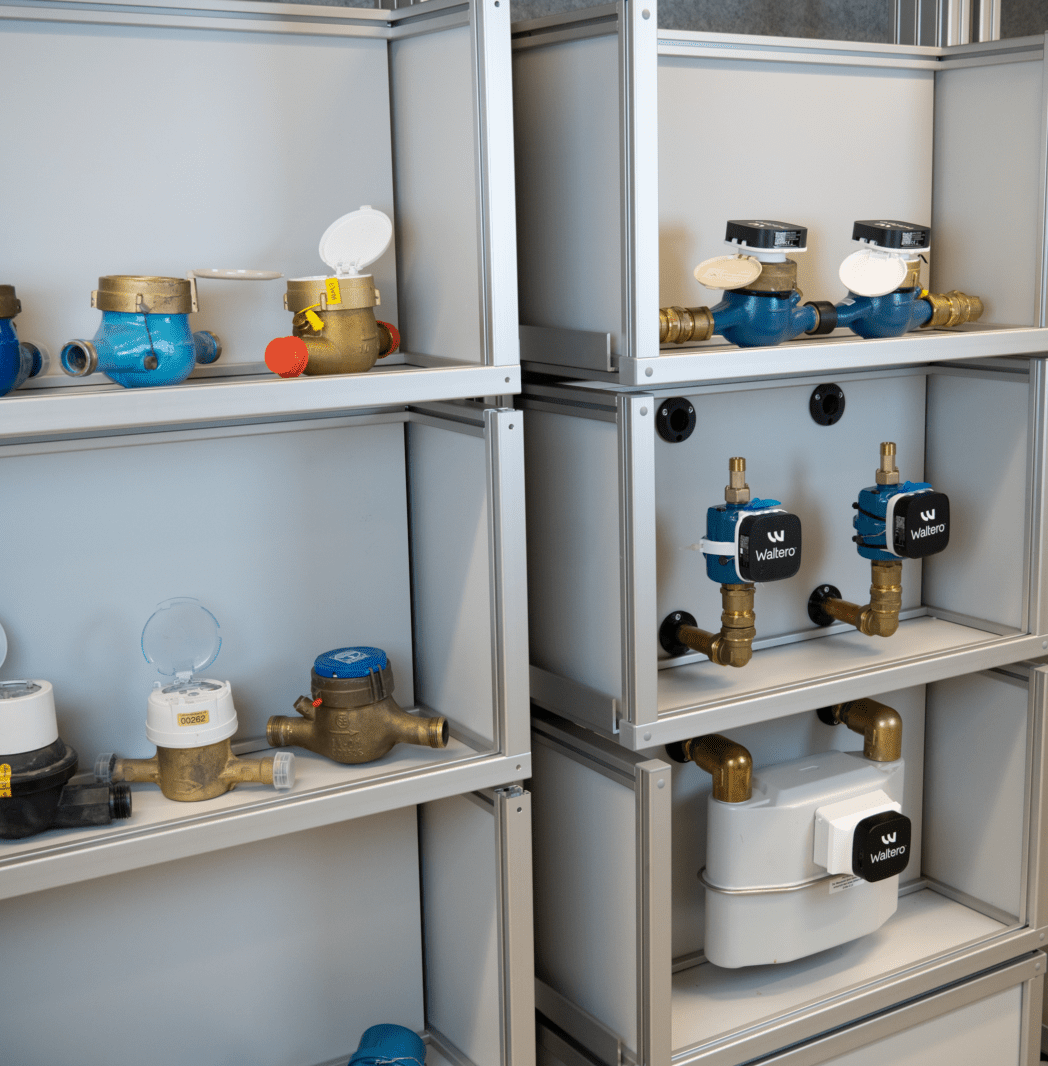The general installation process, making an analog meter digital using the W-Sensor
When following the Waltero installation methodology for installing and commissioning readers on existing analog meters and making them digital, a methodical and thorough approach is taken. The process begins with a comprehensive survey and assessment of the existing meters. This initial step provides the installation team with a solid understanding of the setup and potential challenges. The compatibility of the new reader with the current meters is also confirmed at this stage.
The physical installation follows the assessment. On location, the batteries are inserted and the W-Sensor starts operating. The reader is securely mounted onto the existing meter. The placement should be such that the reading is not obstructed. The Waltero meter adapter offers a hinge, making the placement of the reader convenient for future operations on the analog meter.
The installer commissions the reader by following a few steps using a mobile phone.
At the end of the process, the installer of the W-System can easily confirm the status of the reader, and meter, and verify the correct connection instantly by logging in to the W-Cloud.
After successful installation, configuration, and testing, the smart reader is officially commissioned and put into service. This entire process ensures the successful integration of smart readers with existing infrastructure, ultimately improving meter reading efficiency, enhancing customer service, and facilitating better management of resources. Additionally, relevant personnel may be trained to handle the smart meter data, which will further guarantee the effective use of these devices.
Common challenges with installation and commissioning readers to meters
The traditional way of digitizing analog meters has been by using pulse readers. The pulse reader detects the turning of the meter’s dials by using a magnetic pulse or mechanically opening and closing a switch. This technology has proved to be burdened by some issues. It can be tampered with by using magnets. The switch may miss a pulse or do a double reading. Not to any great extent but enough for the values in the system and on the meter to deviate over time. This creates a mistrust in the overall system. Since the Waltero solution can read from various metering devices, and doesn’t use a pulse to read the dials the risk of incompatibility is non-existent.
The power supply can present its own set of challenges. For readers that require an external power source, supplying reliable power can be a problem. And for those powered by batteries, battery life, and performance may be inadequate. There have been occasions when data has been lost, in ordinary smart meters, due to failing batteries or electronics. That’s why Waltero’s reader is powered by renewable batteries, enabling easy changes for powering the reader. And, the Waltero solution will always have a reliable and mechanical meter underneath, enabling readings at any time. The W-Sensor’s attachment doesn’t disrupt the function of the mechanical meter.
Ensuring that all systems hold the correct ID is paramount for follow-up and aggregation of data. When installing the W-Sensor, the installation ID is read at the location ensuring connection and that both ends comply. The GPS coordinates of the meter are also captured to further ensure
Since the W-Sensor is an add-on device, the hassles of changing meters are nonexistent. There is no need to ensure the correct length of a new meter, no seized nuts and bolts to handle, or lines of mixed diameters. Most notably, no lines are opened. Therefore there are no risks of leaks or need for specially certified personnel. Since the installation process of the Waltero solution is highly simplified, even unskilled personnel can install it without extensive training. Easy guidance is provided, which is all needed to fulfill the installation. The W-System is a seamless solution.
Conclusion
The overall installation of the W-Sensor is a simplified process where nothing is taken away, just added. The installation of the reader takes less than 5 minutes including the registration of the meter ID. The site ID is registered as a part of the process, hence reducing the risk of faulty IDs and the installation can be conducted by personnel with limited training. The simplified process means fewer risks of having to return to the meter location due to factors outside the utility company’s control. There is also no effort needed after the installation on site. You don’t have to take care of old meters and materials as an installer.

